Abstract
Heterogeneity among chromosomes was found to be a highly significant source of variation for association proportions, while culture, slide, and observer were negligible sources of variation for association proportions although important for numbers of associations. The consequences of these results for tests of group differences are discussed. It seems evident that each pair of acrocentric chromosomes has its own characteristic probability of entering into association. This is presumably a combination of the probability for each individual member of the pair, a proposition easily tested utilizing acrocentric chromosomes carrying polymorphisms which allow each member of the pair to be individually recognized. A mathematical theory for pairwise satellite association was developed and shown to fit observations on banded chromosomes. While we found very significant heterogeneity among individuals in the frequency with which different chromosomes entered into associations, there was no significant evidence for preferential association between any particular chromosomes, either heterologous or homologous. This finding in our material of apparently random associations between different chromosomes is contrary to claims made by other investigators and should be tested on other material. No correlation was found between the phenotype of the chromosome, as judged by cytogenetic polymorphisms, and its probability of association.
Full text
PDF
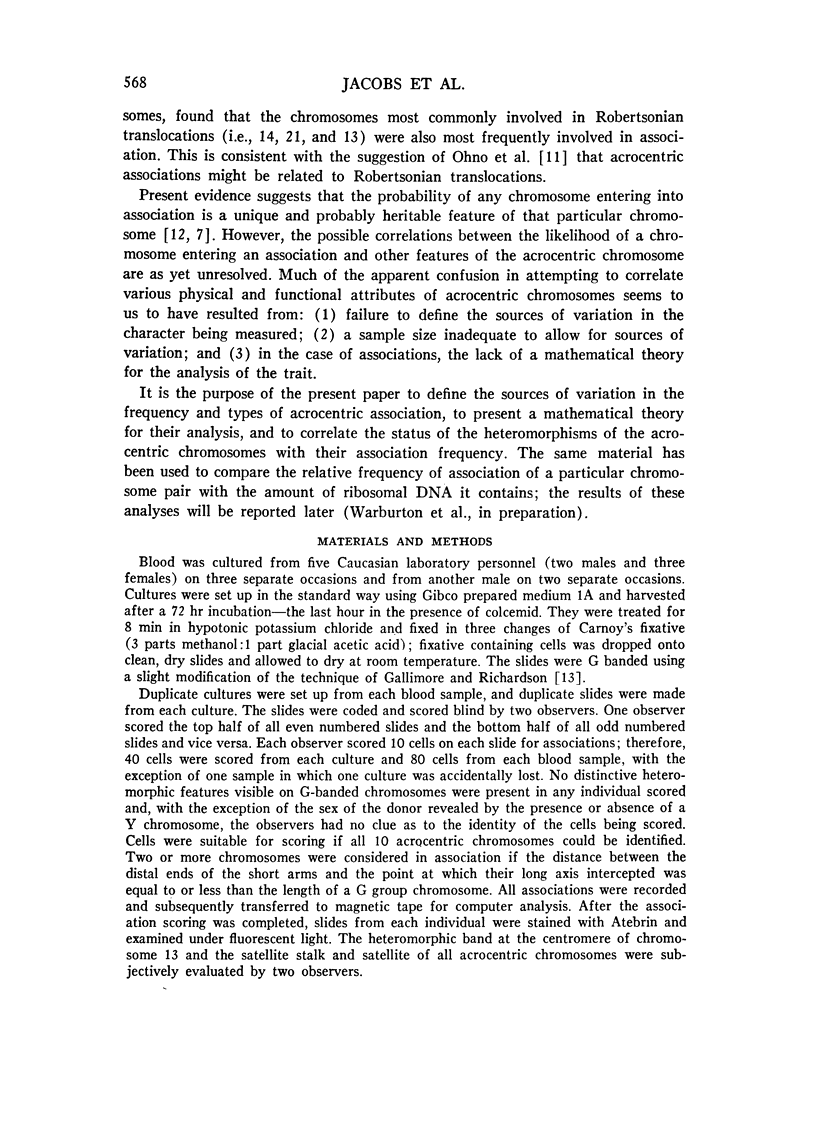
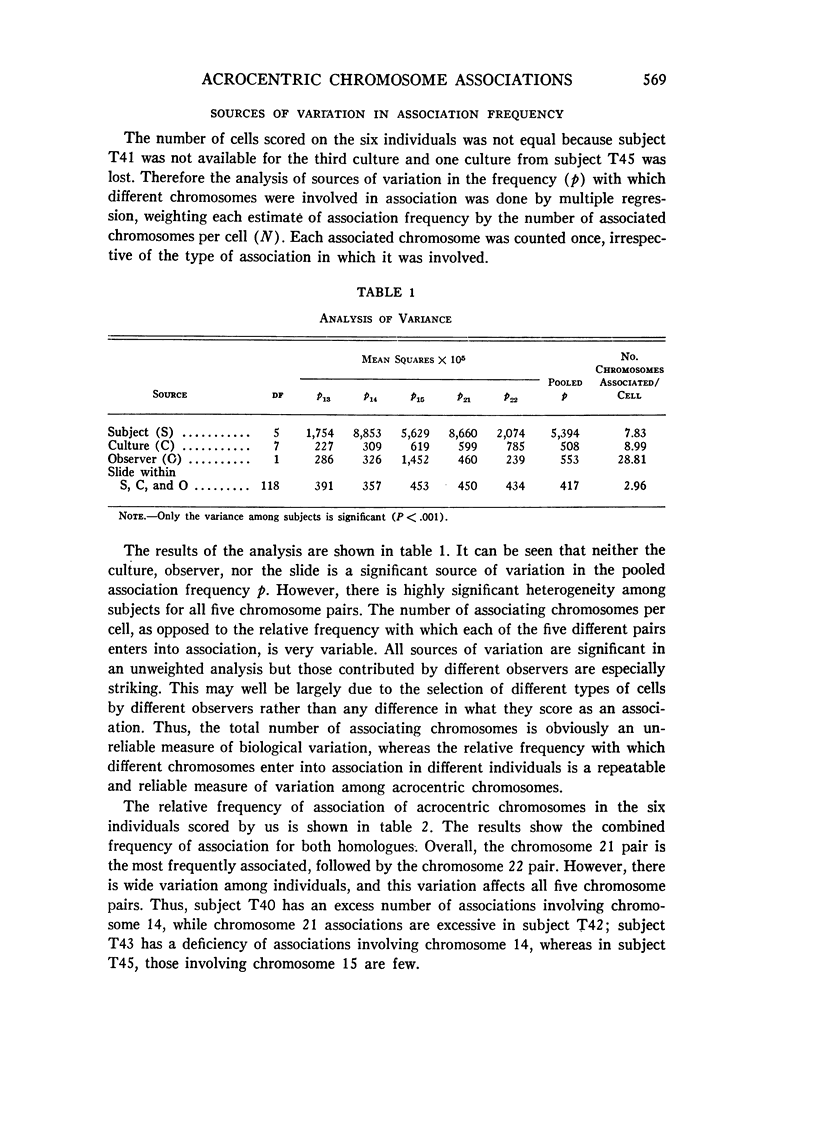
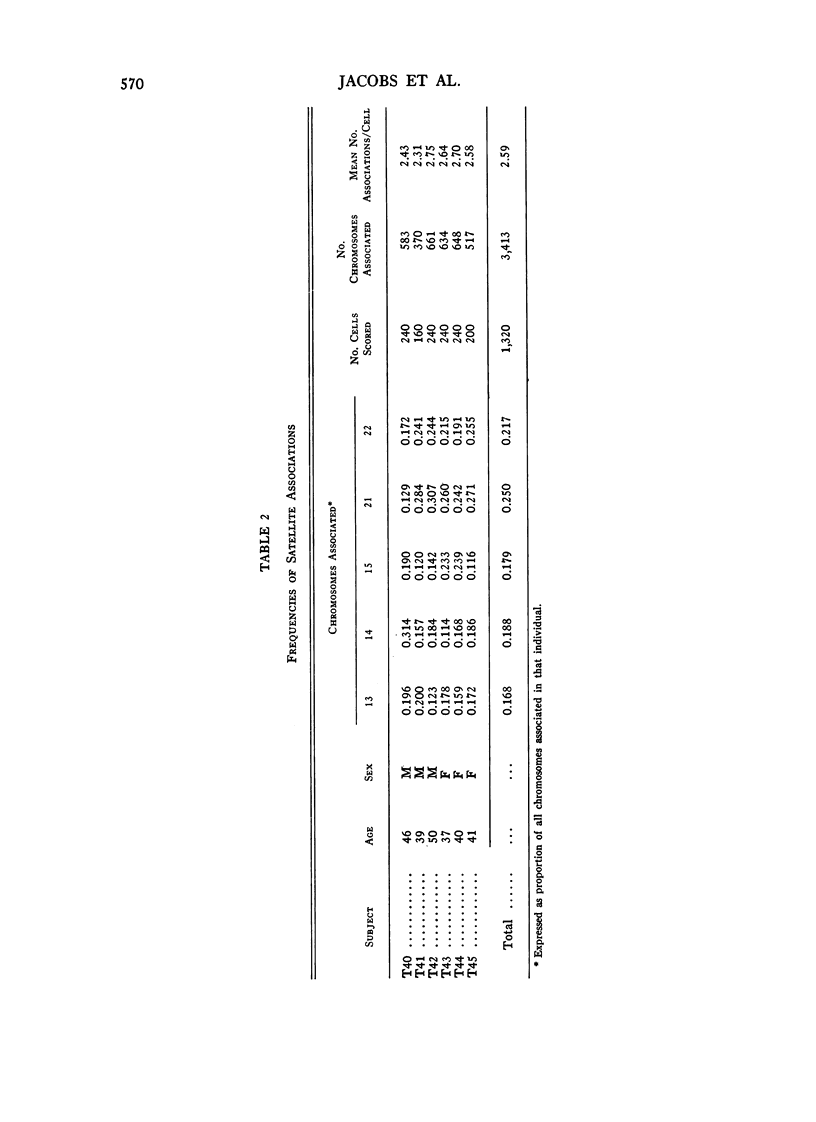
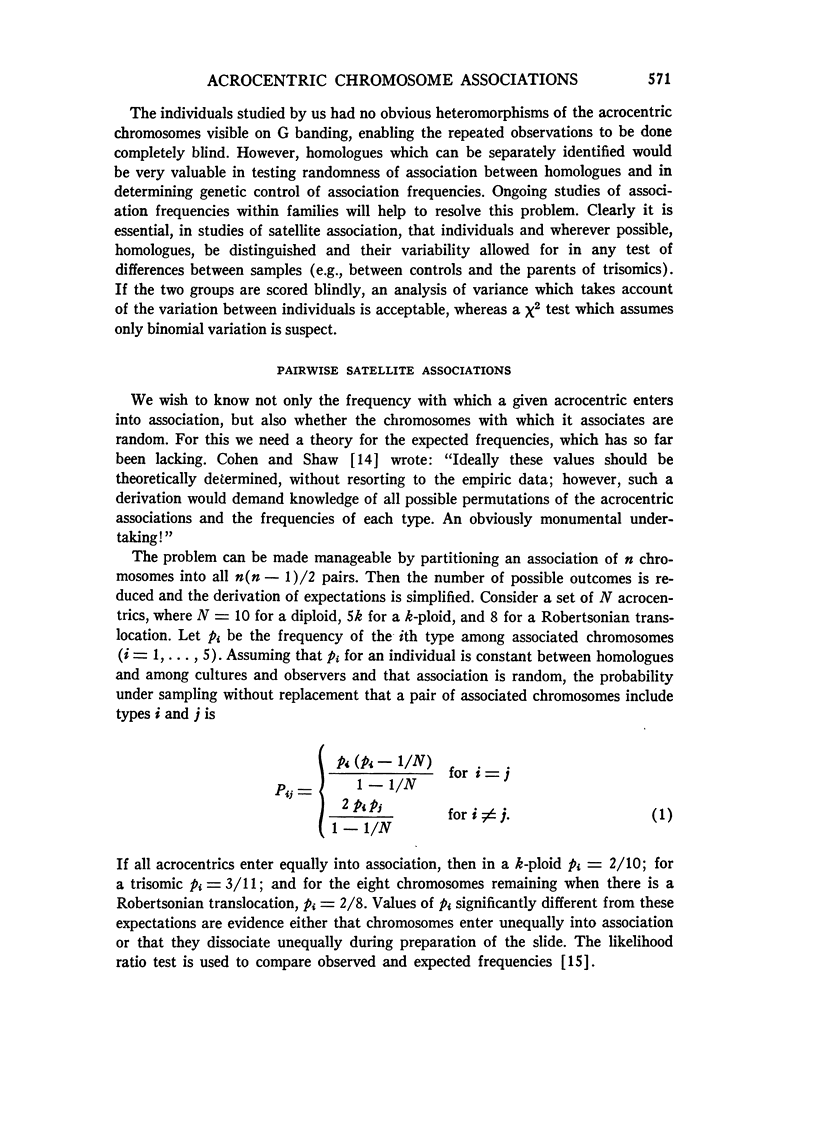
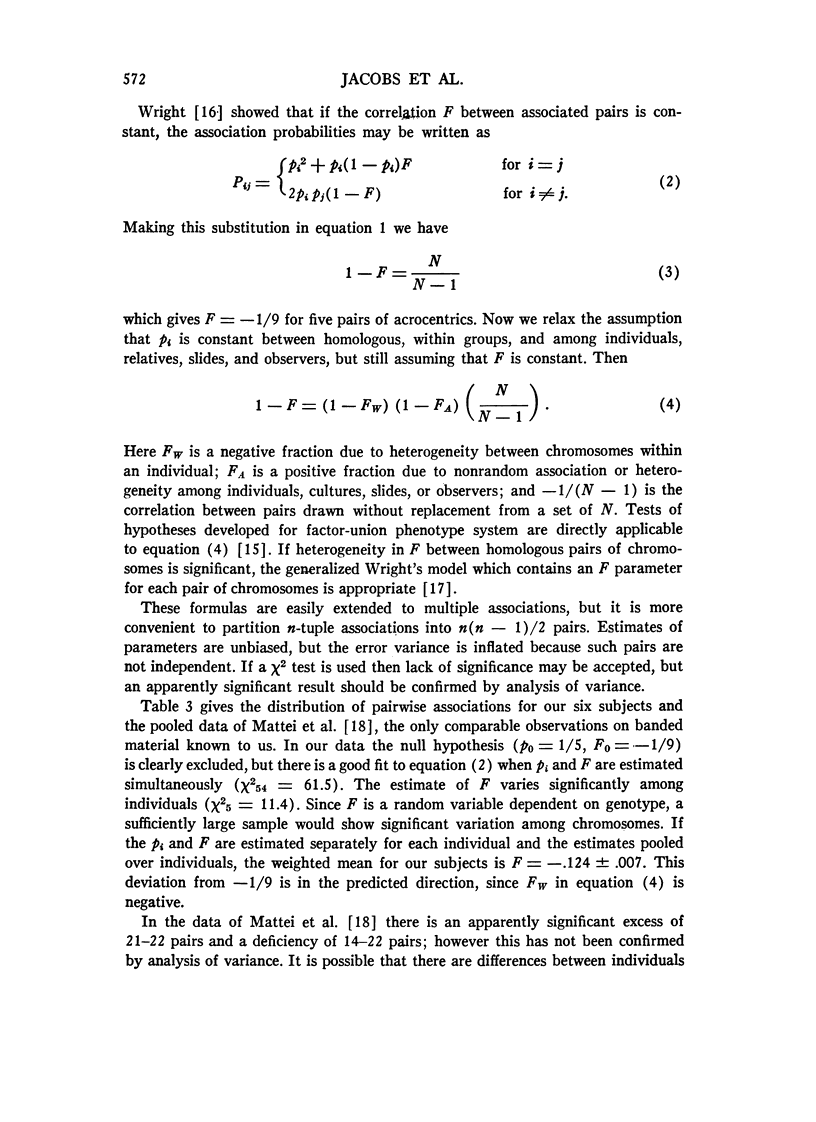
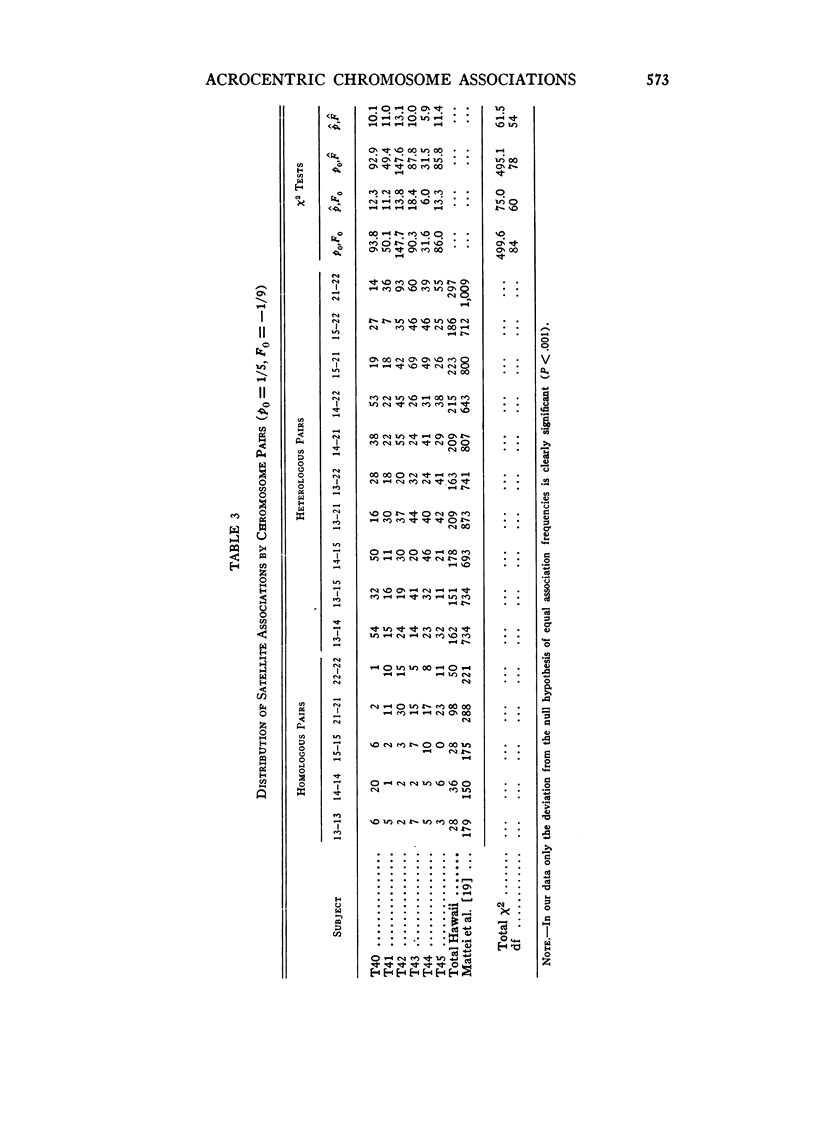
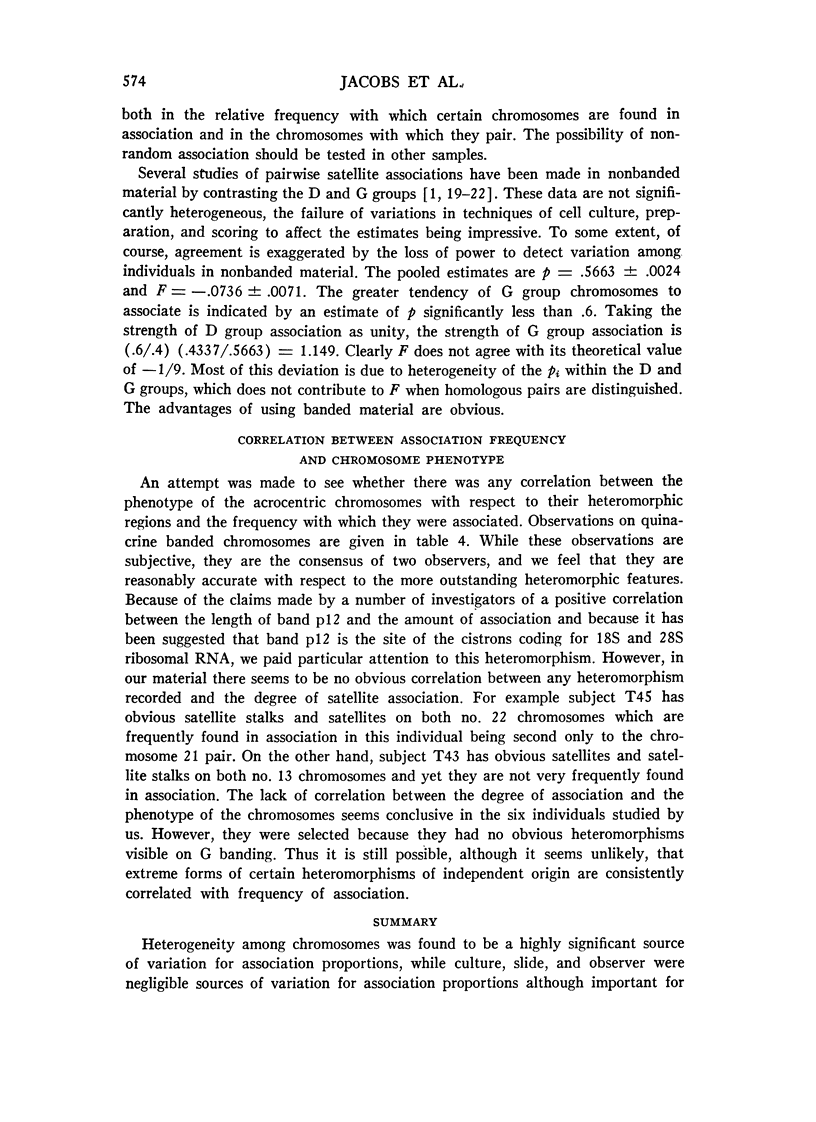
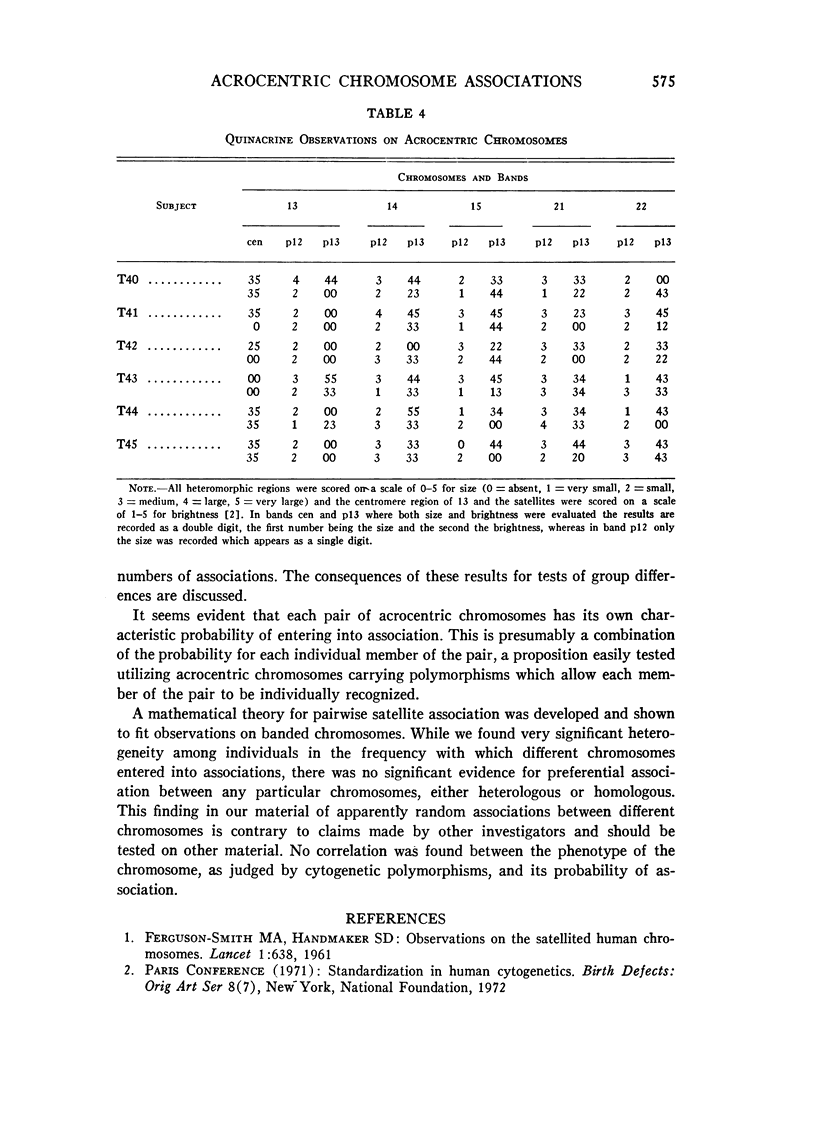
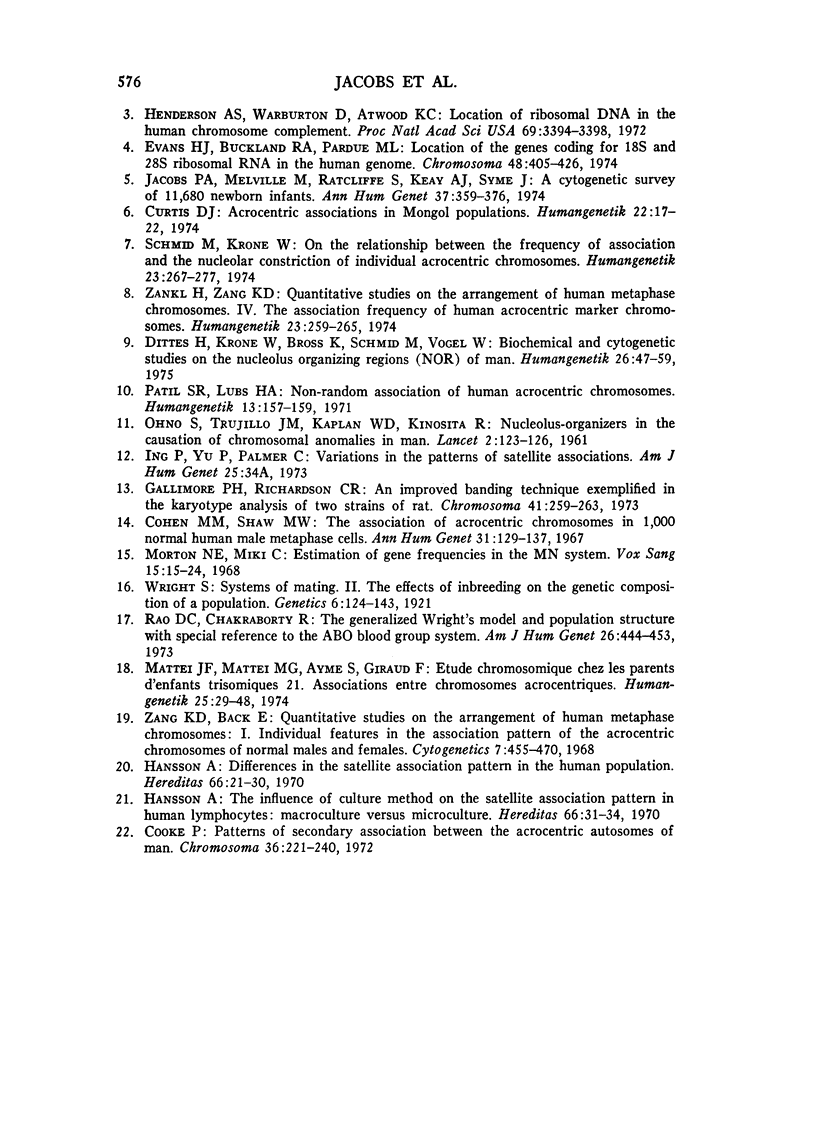
Selected References
These references are in PubMed. This may not be the complete list of references from this article.
- Cooke P. Patterns of secondary association between the acrocentric autosomes of man. Chromosoma. 1972;36(3):221–240. doi: 10.1007/BF00283242. [DOI] [PubMed] [Google Scholar]
- Curtis D. J. Acrocentric associations in mongol populations. Humangenetik. 1974 Apr 24;22(1):17–22. doi: 10.1007/BF00338131. [DOI] [PubMed] [Google Scholar]
- Dittes H., Krone W., Bross K., Schmid M., Vogel W. Biochemical and cytogenetic studies on the nucleolus organizing regions (NOR) of man. II. A family with the 15/21 translocation. Humangenetik. 1975;26(1):47–59. doi: 10.1007/BF00280284. [DOI] [PubMed] [Google Scholar]
- FERGUSON-SMITH M. A., HANDMAKER S. D. Observations on the satellited human chromosomes. Lancet. 1961 Mar 25;1(7178):638–640. doi: 10.1016/s0140-6736(61)91655-5. [DOI] [PubMed] [Google Scholar]
- Gallimore P. H., Richardson C. R. An improved banding technique exemplified in the karyotype analysis of two strains of rat. Chromosoma. 1973;41(3):259–263. doi: 10.1007/BF00344020. [DOI] [PubMed] [Google Scholar]
- Hansson A. Differences in the satellite association pattern in the human population. Hereditas. 1970;66(1):21–30. doi: 10.1111/j.1601-5223.1970.tb02331.x. [DOI] [PubMed] [Google Scholar]
- Hansson A. The influence of culture method on the satellite association pattern in human lymphocytes: macroculture versus microculture. Hereditas. 1970;66(1):31–34. doi: 10.1111/j.1601-5223.1970.tb02332.x. [DOI] [PubMed] [Google Scholar]
- Henderson A. S., Warburton D., Atwood K. C. Location of ribosomal DNA in the human chromosome complement. Proc Natl Acad Sci U S A. 1972 Nov;69(11):3394–3398. doi: 10.1073/pnas.69.11.3394. [DOI] [PMC free article] [PubMed] [Google Scholar]
- Jacobs P. A., Melville M., Ratcliffe S., Keay A. J., Syme J. A cytogenetic survey of 11,680 newborn infants. Ann Hum Genet. 1974 May;37(4):359–376. doi: 10.1111/j.1469-1809.1974.tb01843.x. [DOI] [PubMed] [Google Scholar]
- Mattei J. F., Mattei M. G., Ayme S., Giraud F. Etude chromosomique chez les parents d'enfants-trisomiques 21. Asociations entre chromosomes acrocentriques. Humangenetik. 1974;25(1):29–48. [PubMed] [Google Scholar]
- Morton N. E., Miki C. Estimation of gene frequencies in the mn system. Vox Sang. 1968;15(1):15–24. doi: 10.1111/j.1423-0410.1968.tb04443.x. [DOI] [PubMed] [Google Scholar]
- OHNO S., TRUJILLO J. M., KAPLAN W. D., KINOSITA R. Nucleolus-organisers in the causation of chromosomal anomalies in man. Lancet. 1961 Jul 15;2(7194):123–126. doi: 10.1016/s0140-6736(61)92647-2. [DOI] [PubMed] [Google Scholar]
- Patil S. R., Lubs H. A. Non-random association of human acrocentric chromosomes. Humangenetik. 1971;13(2):157–159. doi: 10.1007/BF00295797. [DOI] [PubMed] [Google Scholar]
- Rao D. C., Chakraborty R. The generalized Wright's model and population structure with special reference to the ABO blood group system. Am J Hum Genet. 1974 Jul;26(4):444–453. [PMC free article] [PubMed] [Google Scholar]
- Schmid M., Krone W., Vogel W. On the relationship between the frequency of association and the nucleolar constriction of individual acrocentric chromosomes. Humangenetik. 1974;23(4):267–277. doi: 10.1007/BF00272510. [DOI] [PubMed] [Google Scholar]
- Wright S. Systems of Mating. II. the Effects of Inbreeding on the Genetic Composition of a Population. Genetics. 1921 Mar;6(2):124–143. doi: 10.1093/genetics/6.2.124. [DOI] [PMC free article] [PubMed] [Google Scholar]
- Zang K. D., Back E. Quantitative studies on the arrangement of human metaphase chromosomes. I. Individual features in the association pattern of the acrocentric chromosomes of normal males and females. Cytogenetics. 1968;7(6):455–470. [PubMed] [Google Scholar]
- Zankl H., Zang K. D. Quantitative studies on the arrangement of human metaphase chromosomes. IV. The association frequency of human acrocentric marker chromosomes. Humangenetik. 1974;23(4):259–265. doi: 10.1007/BF00272509. [DOI] [PubMed] [Google Scholar]


